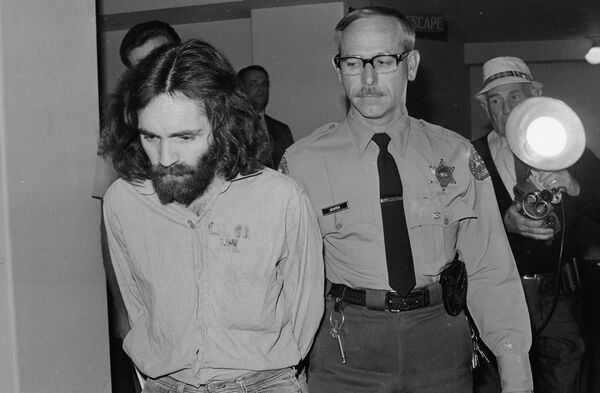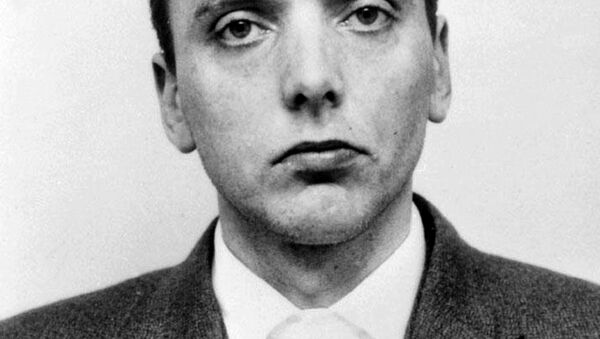Brady and his girlfriend Myra Hindley — who died in prison in 2002 — were together known as the Moors Murderers and their trial in 1966 shocked Britain.
Although they were not the most prolific serial killers in British history, the details of their crimes were truly shocking.
Brady's death comes only months after it was reported that another notorious killer, Charles Manson, was dying of cancer.

The pair had befriended and abducted children and the trial jury were played horrific audio tapes which they had recorded of the youngsters being pitilessly tortured.
Lesley Ann Downey, 10, could be heard telling Brady and Hindley: "Let me go, please," "Don't undress me, will you?" and "I want to see mummy."
She had vanished without trace on Boxing Day 1964 after going to a fun fair with friends.
Detectives trying to piece together enough evidence to convict her killers had to ask her mother, Ann West, to positively identify her daughter's voice on a tape, made as she screamed and begged for her life.
Those screams stayed with her for the rest of her tormented life.
For years she had to take valium and sleeping tablets to cope with the nightmares, until she finally died of cancer.
She died in 1999, without ever having recovered her daughter's body.
Four of the victims were buried on Saddleworth Moor, east of Manchester, and their bodies remained there for decades.
Glasgow-born Brady was a quiet, brooding stock clerk who admired the Nazis and was heavily influenced by the writings of Nietzsche and the Marquis de Sade. In 1961 he fell in love with Hindley, who was 19. But it was a perverted love.
The killings began on 12 July 1963 when Hindley lured Pauline Reade into her car as the 16-year-old walked to a dance at a railwaymen's club in Manchester.
The couple repeated the method roughly every six months, picking up 12-year-old John Kilbride at a market in Ashton-under-Lyne, Keith Bennett, also 12, as he walked to his grandmother's home in Longsight, and finally Lesley Ann Downey.
These victims should be trending and in our thoughts today. Not #IanBrady! pic.twitter.com/aJlve7IXY7
— Grumpy old bint (@grumpyoldbint) May 15, 2017
Pornographic pictures of Lesley Ann, along with the cassette recordings of her voice, were later found in a luggage locker at Manchester Central station.
In October 1965 Brady axed to death 17-year-old Edward Evans, a stranger who he had met earlier that evening in a local pub. But the crime was witnessed by another teenager, David Smith, who told the police and Brady and Hindley were arrested. In April 1966, the couple went on trial and were eventually jailed for life with a recommended minimum tariff of 30 years.
Brady never campaigned for his freedom and actually said he wanted to die but Hindley enlisted human rights campaigner Lord Longford in a vain bid to be released. She gave police information which helped them find at least one of the bodies.
But so universally loathed were the Moors Murderers that no politician would contemplate releasing Hindley and she died in prison in November 2002 from a chest infection following a heart attack.
Brady, who died in Ashworth Hospital near Liverpool, had been on hunger strike off and on since 1999, arguing he should be allowed to die, but had been force-fed because he was classed as mentally ill.
Ian Brady.
— Jonathan Nicholas (@JonathanNichol4) May 15, 2017
£40,000 a year to keep him alive for how many years?
Almost enough to agree with the death penalty. #IanBrady
Only one of the Moors Murderers' victims, Keith Bennett, was never found and his mother, Winnie Johnson died in 2012. Martin Bottomley, the head of Greater Manchester Police's cold case unit, said the force would never give up the search for Keith and Brady's death did "not change that."
Breaks my heart that #IanBrady never gave Keith Bennett's family the closure they so desperately needed. Vile man, the world is brighter now
— Izzy (@izaaa_xo) May 15, 2017
Rather than giving #IanBrady the attention even in death, let's get Poor #KeithBennett trending instead pic.twitter.com/ZvcZojkY5Y
— Steve James (@_mark_6) May 15, 2017
He said: "Our aim, as it always has been, is to find where Keith is buried and give closure to his surviving family members so they can give Keith the proper burial they so desperately want. Whilst we are not actively searching Saddleworth Moor, we will act on credible and actionable information that will help lead us to him."


